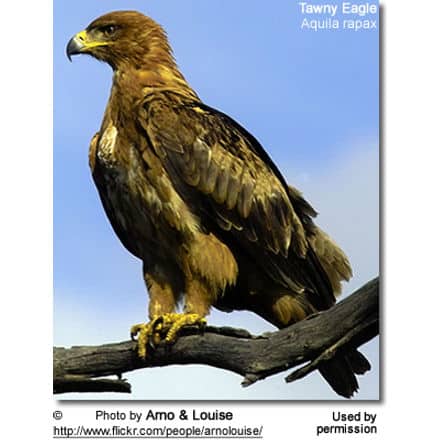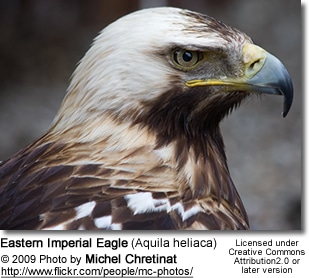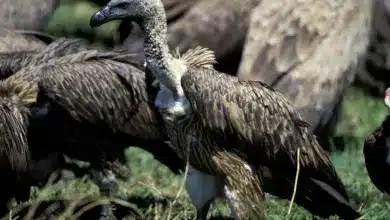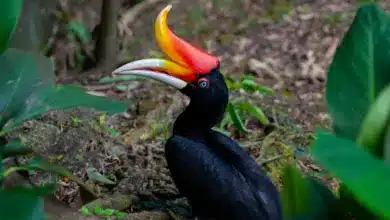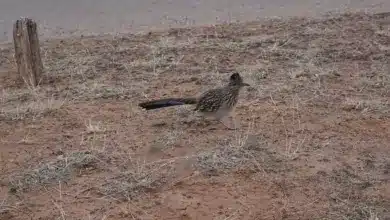Aquila – True Eagles
Aquila – True Eagles
Aquila is a genus of true eagles. It is often united with the buteos, sea eagles and other more heavyset Accipitridae, but more recently it appears as if they are less distinct from the more slender accipitrine hawks than believed. Eagles are not a natural group but denote essentially any bird of prey large enough to hunt sizeable (about 50 cm long or more overall) vertebrate prey.
Species
Aquila belongs to an extremely close-knit group of “typical” eagles. These include genera like Hieraaetus, Lophaetus, Ictinaetus, and the extinct Harpagornis, and all these appear to be paraphyletic with regards to the traditional Aquila.
Some, if not all, species of Hieraaetus, separated primarily due to their smaller size, seem to belong here. The entire “typical eagle” group is in need of a thorough revision, and thus this species list cannot be more than a tentative one at present.

Most problematic is certainly Hieraeetus, the hawk-eagles. It is known that the type species, the Booted Eagle, is very close to some Aquila eagles.
Other hawk eagles might indeed be distinct enough to warrant generic separation, but the name Hieraaetus is not available for them, being a junior synonym of Aquila as the Booted Eagle is included herein.
- Bonelli’s Eagle, Aquila fasciata – formerly Hieraaetus fasciatus
- Booted Eagle, Aquila pennata – formerly Hieraaetus pennatus
- Little Eagle, Aquila morphnoides – formerly Hieraaetus morphnoides
- Rufous-bellied Eagle, Aquila kienerii – formerly Hieraaetus kienerii
- African Hawk-Eagle, Aquila spilogaster – formerly Hieraaetus spilogaster
- Golden Eagle, Aquila chrysaetos
- Eastern Imperial Eagle, Aquila heliaca
- Spanish Imperial Eagle Aquila adalberti
- Steppe Eagle, Aquila nipalensis
- Tawny Eagle, Aquila rapax
- Greater Spotted Eagle, Aquila clanga – to be moved to Lophaetus or Ictinaetus
- Lesser Spotted Eagle, Aquila pomarina – to be moved to Lophaetus or Ictinaetus
- Indian Spotted Eagle, Aquila hastata – recently split from A. pomarina, to be moved to Lophaetus or Ictinaetus
- Verreaux’s Eagle, Aquila verreauxii
- Gurney’s Eagle, Aquila gurneyi
- Wahlberg’s Eagle, Aquila wahlbergi
- Wedge-tailed Eagle, Aquila audax
- Tasmanian Wedge-tailed Eagle, Aquila audax fleayi
- Malagasy Eagle, Aquila sp. (prehistoric)
Fossil record
Numerous fossil taxa of eagles have been described. Many have been moved to other genera, but several appear correctly assigned to this genus:
- ?Aquila delphinensis (Middle/Late Miocene of Grive-Saint-Alban, France)
- ?Aquila pennatoides (Middle/Late Miocene of Grive-Saint-Alban, France)
- Aquila sp. (Late Miocene – Late Pliocene of S Europe)
- Aquila sp. (Early Pliocene of Florida)
- Aquila bivia (Late Pliocene of S USA)
- Aquila sp. (Middle Pleistocene of Castiglione, Corsica)
- ?Aquila fossilis (Middle/Late Pleistocene of Monte Reale, Sardinia)
It is not clear whether “Hieraaetus” edwardsi (Middle -? Late Miocene of SW Europe) belongs to Aquila or the hawk-eagles (if the latter are indeed distinct). Its initial name, “Aquila” minuta Milne-Edwards, 1871, is preoccupied with a junior synonym of the Booted Eagle, Aquila minuta Brehm, 1831.
Not placed in Aquila anymore are:
- “Aquila” gervaisii – now in Palaeohierax
- “Aquila” borrasi, “A.” sodalis – now in Buteogallus. B. borrasi was long placed in Titanohierax (an extinct genus of giant hawk from Cuba and Bahamas).
- “Aquila” pliogryps – now in Spizaetus
- “Aquila” corroyi, “A.” depredator, “A.” hypogaea and “A.” prisca – now in Aquilavus
- “Aquila” ferox, “A.” lydekkeri – protostrigid owls, now in Minerva.
“Aquila” danana (Snake Creek Late Miocene/Early Pliocene of Loup Fork, U
SA), occasionally placed in Geranoaetus or Buteo, was a bird of prey of unclear relationships.
For paleosubspecies of living Aquila, see the species accounts.
Footnotes
- Brodkorb (1962), Mlíkovský (2002)
- Mlíkovský (2002): p.194Salotti et al. (2000)
References
- Mlíkovský, Jirí (2002): Cenozoic Birds of the World, Part 1: Europe. Ninox Press, Prague. ISBN 80-901105-3-8
- Brodkorb, Pierce (1964): Catalogue of Fossil Birds: Part 2 (Anseriformes through Galliformes). Bulletin of the Florida State Museum 8(3): 195-335. PDF or JPEG fulltext
- Salotti, Michelle; Bellot-Gourlet, Ludovic; Courtois, Jean-Yves; Dubois, Jean-Noël; Louchart, Antoine; Mourer-Chauviré, Cécile; Oberlin, Christine; Pereira, Elisabeth; Poupeau, Gérard and Tramoni, Pascal (2000): La fin du Pléistocène supérieur et le début de l’Holocène en Corse: apports paléontologique et archéologique du site de Castiglione (Oletta, Haute-Corse) [The end of the Late Pleistocene and the Early Holocene in Corsica: New paleontological and archaeological data from Castiglione deposit (Oletta, Haute-Corse)]. Quaternaire 11: 219-230. [French with English abstract]

